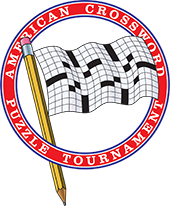New York Times puzzle editor has roots in Indiana
Source: Louisville, Kentucky Courier-JournalDate: December 29, 1998
Byline: Unsigned
New York Times puzzle editor has roots in Indiana
From wire and staff reportsSorry, Vanna White and Pat Sajak. But the biggest celebrity in serious crosswords today is a former Hoosier who sold his first homemade puzzle at 14, devised his own puzzle study curriculum ("enigmatology") as an Indiana University student the early 1970s and since 1993 has been making his global mark on crosswords by perching at puzzledom's pinnacle, as editor of The New York Times crossword puzzle.
Or maybe some of you know Will Shortz best from his Sunday morning "puzzlemaster quiz on National Public Radio's "Weekend Edition" show.
Whatever he's concocting at any given moment, the 45 year-old Shortz has worked hard to help popularize, modernize and even glamorize puzle-solving since his formative years in Crawfordsville, west of Indianapolis.
He even contributed riddles to the 1995 film "Batman Forever."
For his New York Times job, Shortz actually creates few puzzles. He edits them. He receives 60 to 75 puzzles a week, picks enough publishable pieces to fill seven days; then typically rewrites about half the clues to keep each puzzle varied and increasing in difficulty from a fairly easy Monday to a killer Saturday or Sunday.
Sometimes he rewrites nearly all the clues to get the job done.
Along the way, he has updated the Times crossword approach to attract new, young fans who, for example, can appreciate references to rap star Puff Daddy.
Of course, the change also has prompted angry letters from older or staunchly traditional puzzle solvers who can easily recall Mamie Eisenhower's maiden name (Doud) but scratch their heads over the meaning of "GPA" (grade point average).
Shortz knew the transition would be tough for some. "When I started, I was 36 years younger than my predecessor," he said. "Not surprisingly, anything more recent than 1955 came as kind of a culture shock. But now people are starting to come around, I think."
Shortz also has expanded the variety of puzzle makers whose works he publishes. "I'm trying to get different voices in," he said. "Through themes and vocabulary, different personalities come through."
On his path to this point, Shortz also became an active puzzle promoter. In 1978 he founded the American Crossword Puzzle Tournament, which he still directs annually in Stamford, Conn.
He also studies puzzle history and has a museum-quality collection of vintage puzzles and puzzle books --18,000 of them including a laminated, yellowed "wordcross" clipped from the Dec. 21,1913, edition of Joseph Pulitzer's New York World newspaper. Created by Arthur Wynne, the diamond-shaped puzzle was devised as a filler and ran for three weeks before a printing goof transposed "word-cross" into the name people know today.
The crossword was a hit and eventually led to a crossword craze that began in 1924.
"Crosswords dislodged mahjongg as the fad," Shortz said. "Everyone thought it would come and go."
Copyright 1998 The Courier-Journal. Used with permission.

